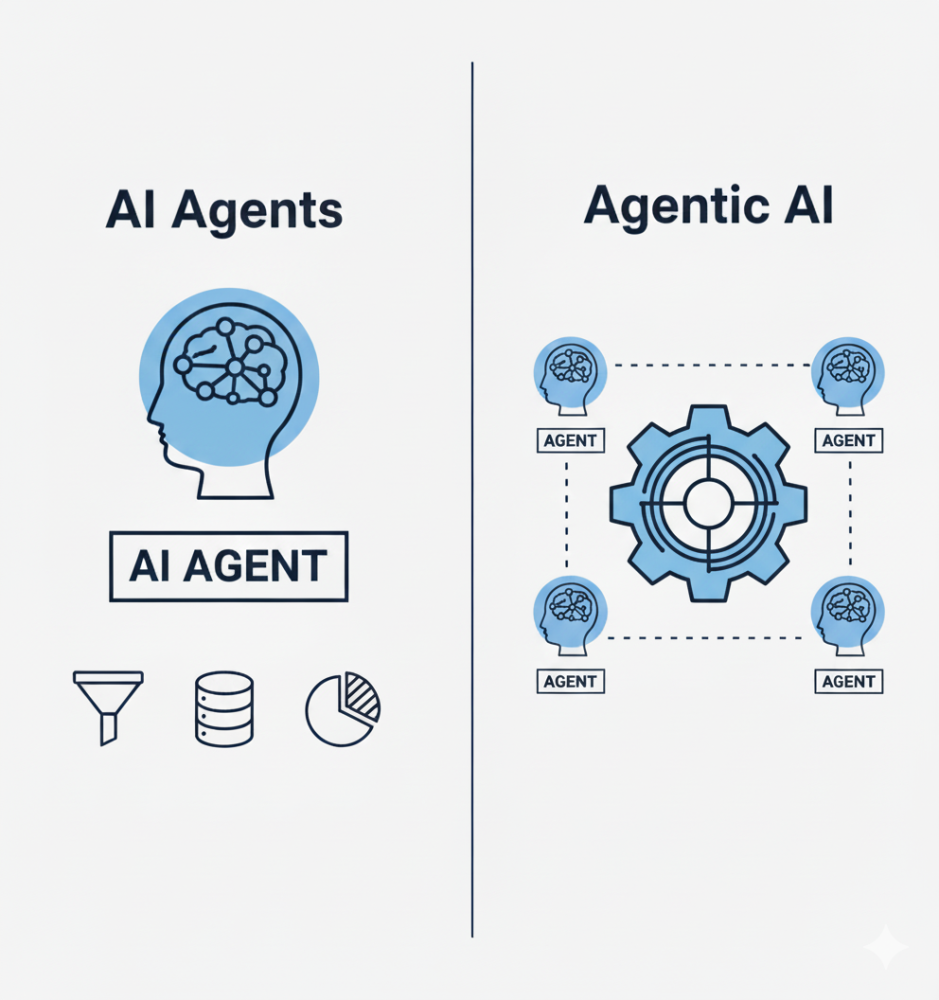Solutions
Solutions
Products
Products
Services
Services
Industries
Industries
Resources
Resources
About us
About us
Get started


This series is our way of sharing structured insights about artificial intelligence—concepts, frameworks, and real-world applications—directly with professionals, researchers, and builders.
For much of the past decade, the conversation around AI has revolved around models. Large language models and their multimodal counterparts captured attention with their ability to generate, summarize, and reason. But organizations are discovering that the real impact doesn’t come from the model alone. It comes when the model is embedded in a system that can perceive, act, and adapt—what we now call an AI Agent.

An AI Agent can be thought of as a digital worker. It is not just a tool that responds when prompted, but an entity that interacts with its environment, makes decisions, and executes tasks.
Beyond that lies Agentic AI, systems that are capable of setting their own goals and revising their strategies as conditions change. And when multiple agents are orchestrated into a coordinated process, we arrive at Agentic Workflows—end-to-end sequences that can run with minimal human oversight. This evolution signals a shift from AI as a passive instrument to AI as an active collaborator.

To better understand this transformation, it helps to break AI’s evolution into three layers:
Together, these layers mark the progression from simple task automation to adaptive digital colleagues and, ultimately, to orchestrated digital teams.

For energy and industrial companies, the rise of AI agents is not an abstract trend—it directly addresses long-standing operational challenges:
These are not future scenarios. Companies are already piloting predictive maintenance agents in upstream assets, diagnostic assistants in grid operations, and automated reporting agents in compliance-heavy domains. The common goal: reduce downtime, increase efficiency, and strengthen resilience.

Scaling agent-based systems in energy and industry raises important questions:
Answering these questions will determine whether early pilots translate into enterprise-wide transformation.